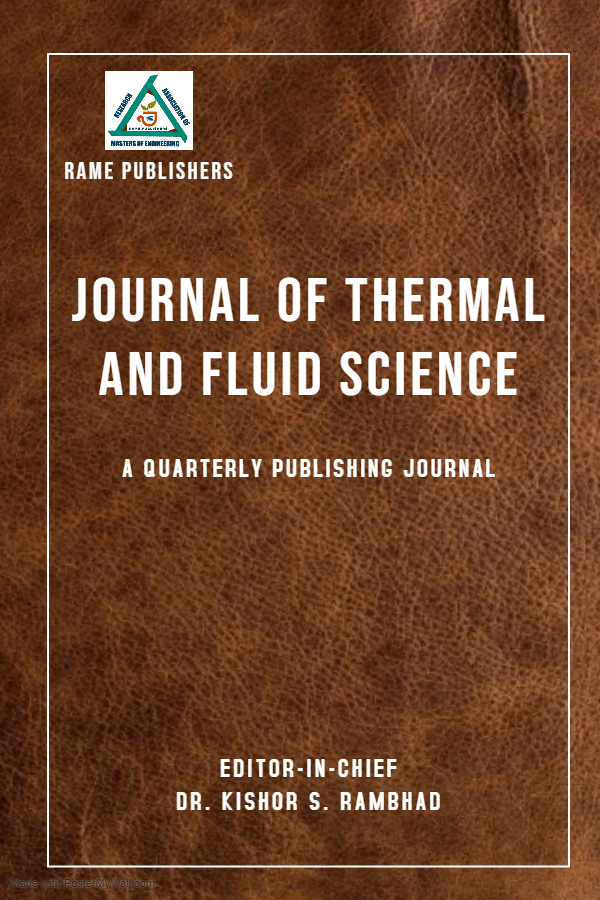A Material Substitute for Column A-Pole of LCV by Using Composite Reinforced Aluminium
Pankajkumar Narayanrao Salunke and Sandeep M. Patil
Journal of Thermal and Fluid Science
Volume 3: Issue 1, June 2022, pp 7-13
Author's Information
Pankajkumar Narayanrao Salunke1
Corresponding Author
1PG Student, S.G.D.College of Engineering, Jalgaon, India, India
pankajsalunke124@gmail.com
Sandeep M. Patil2
2Assistant Professor, S.G.D.College of Engineering, Jalgaon, India
Abstract:-
Automobile industry is always in search to find an alternative methodology to implement the continuous changes in passenger car norms and customer expectations. Weight is main factor of the vehicle which has dominant effect on emission, performance and efficiency of the vehicle. Now day’s use of Mild Steel is reduced with lightweight materials like Aluminium and its alloys, Glass fiber, Plastic and others. The work has been carried out to decrease the weight of the A-Pole reinforcement of the passenger car SUV class and to fulfill the vibration requirement. A traditional material Mild Steel is replaced by composite of Glass fiber with Aluminium reinforced. Project executed in three stages. At initial stage present geometry details are reverse engineered like its dimensions and thickness. Continued by setting base line targets for new material by FEA method for vibration and linear static analysis. Correlation of light weight structure is achieved with different iterations with help of tools like ANSA, Hypergraph Metapost, Hypermesh, Optistruct and Nastran. Results comparison shows that the Aluminium with reinforced glass fiber reduces the mass of A-Pole by 30% by mechanical strength.Index Terms:-
A-Pole, BIW SUV, Vibration analysis, linear static analysis, FEA Methodology, Weight reduction.REFERENCES
- A. B. Deshmukh, S.V. Chaitanya, Sachin Wagh, “Case Study on Sandwich steel Application in Automotive BIW for NVH Improvements”, IOSR Journal of Mechanical and Civil Engineering (IOSR-JMCE), PP : 01-06
Online - Shaobo Young, “Vehicle Nvh Development Process And Technologies”, The 21st International Congress on Sound and Vibration, 13-17 July 2014.
Online - Fard, M. and Liu, Z., "Automotive Body Concept Modeling Method for the NVH Performance Optimization," SAE Technical Paper 2015-01-0012.
Crossref - S V Dusane, M K Dipke and M A Kumbhalkar, “Analysis of Steering Knuckle of All Terrain Vehicles (ATV) Using Finite Element Analysis”, IOP Conference Series: Material Science and Engineering, Volume 149, 012133.
Crossref - Ying Yanga, Guangyao Zhaoa, Dongbo Mab and Xiaobin Xua, “Mode calculation and testing of a car body in white”, Shock and Vibration, Volume 18 (2011), Issue 1-2, Pages 289-298.
Crossref - Manoj A. Kumbhalkar; D.V. Bhope; A.V. Vanalkar, “Evaluation of Frequency Excitation of Helical Suspension Spring Using Finite Element Analysis”, International Journal of Computer Aided Engineering and Technology (Inderscience Publisher), Vol. 9, No. 4, pp 420-433, 2017.
Crossref - Ion DINCĂ, Adriana ŞTEFAN, Ana STAN, "Aluminium/Glass fibre and Aluminium/Carbon fibre Laminates", INCAS BULLETIN, Volume 2, Number 2/ 2010, pp. 33 – 39.
Crossref - Vibhor Gujjewar, Vaibhav Jangid, Rohit Jagdale, Vaibhav Kadam, Prof. M.A. Kumbhalkar, Mr. P. P. Chaoji, “Study for Frequency Response of Railway Vehicle Using Modal Analysis”, IOSR Journal of Mechanical and Civil Engineering (IOSR-JMCE), Volume 7, pp 34-39, 2018.
Online - Dejan V. Matijević, Vladimir M. Popović, “Overview of Modern Contributions in Vehicle Noise and Vibration Refinement with Special Emphasis on Diagnostics”, VOL. 45, No 3, 2017, 449.
Crossref
To view full paper, Download here
To View Full Paper
For authors
Author's guidelines Publication Ethics Publication Policies Artical Processing Charges Call for paper Frequently Asked Questions(FAQS) View All Volumes and IssuesPublishing with




